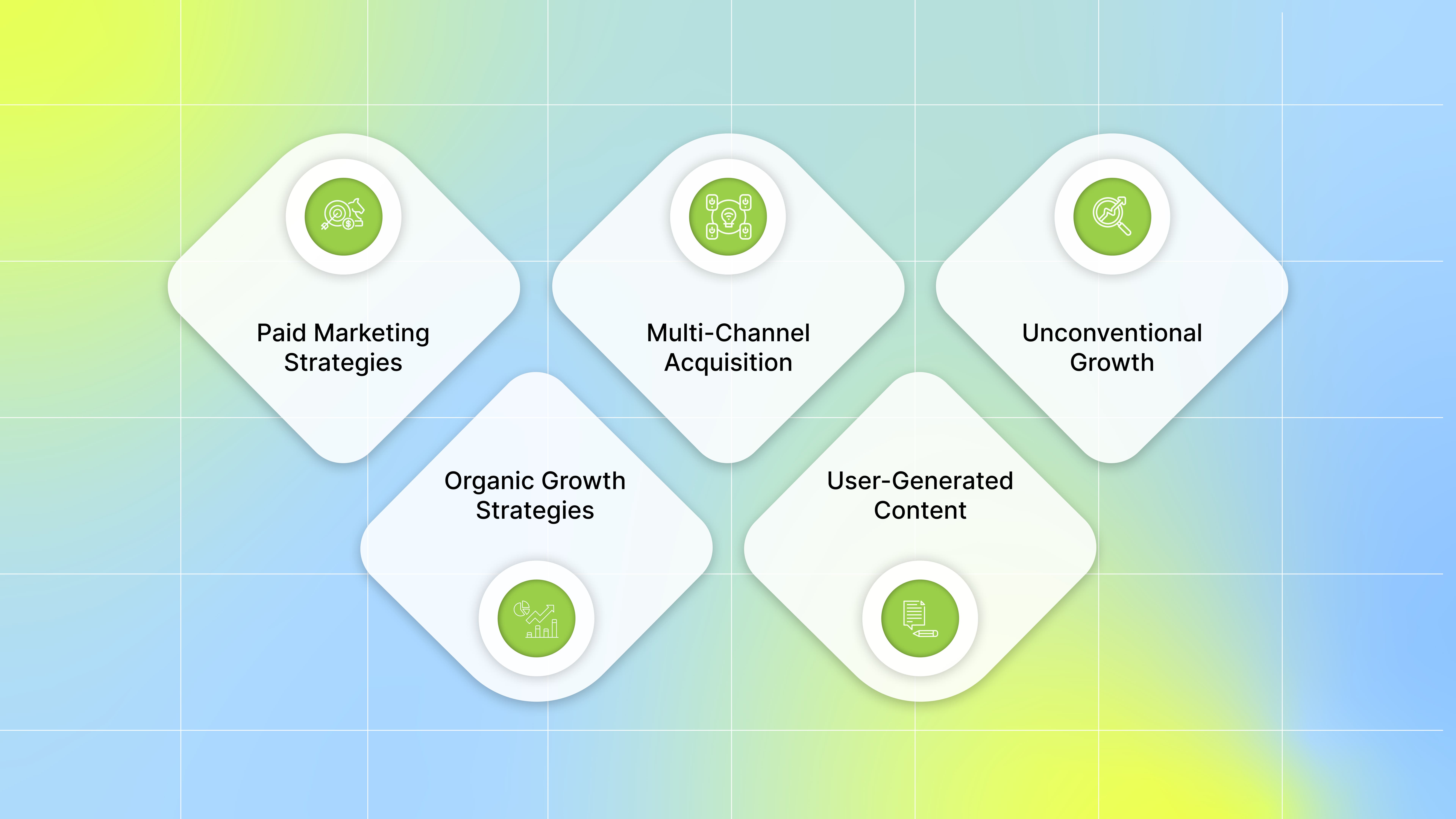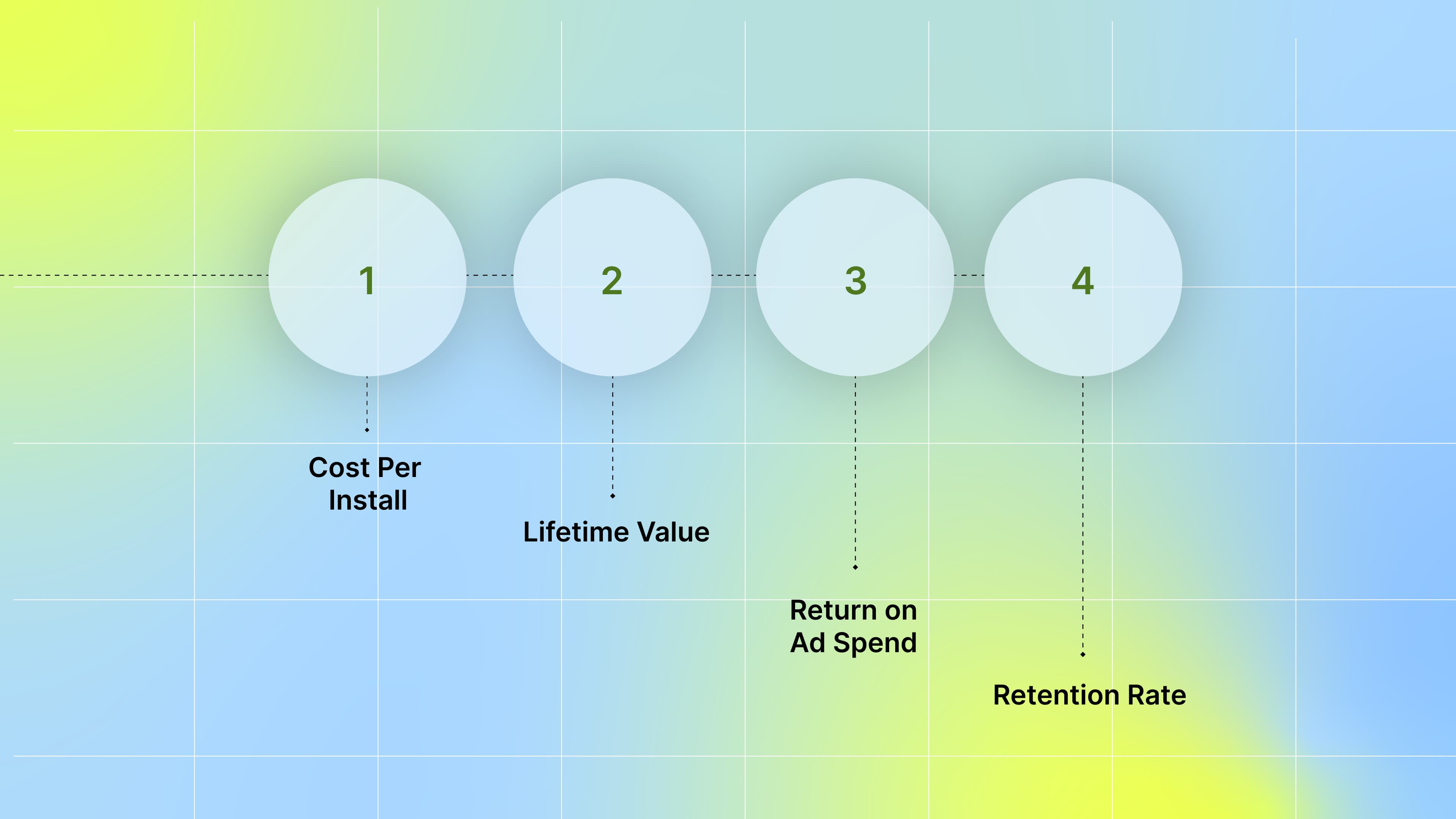Strategies for Customer Acquisition Success: A Complete Guide
Attracting players requires more than just appealing graphics or catchy gameplay. Success hinges on understanding the diverse motivations that drive customer acquisition.
Players are not a monolithic group; their reasons for gaming vary widely. Some seek self-expression, while others are drawn to social connections, progression, or the thrill of competition. Recognizing these motivations is crucial for tailoring marketing strategies that resonate with different player segments.
For instance, strategy games, despite comprising only 4% of total downloads, account for a significant 21.4% of revenue, highlighting the potential of targeting dedicated players seeking depth and challenge. Conversely, hybrid casual games are gaining traction due to their ability to blend accessibility with engaging mechanics, appealing to a broader audience.
By aligning acquisition strategies with player motivations and game genres, you can enhance engagement, optimize retention, and ultimately drive success in the mobile gaming market.
Challenges in Mobile Game User Acquisition
You face several hurdles in acquiring users:
Rising Costs: The average Cost Per Install (CPI) for casual games in 2025 ranges from $2.50 to $3.50 on iOS and $1.50 to $2.50 on Android. Strategy games have the highest Cost Per Mille (CPM), ranging from $20 to $30+. These elevated costs necessitate a focus on efficiency to ensure that each dollar spent acquires valuable, engaged players.
Privacy Changes: Privacy changes, particularly the deprecation of IDFA on iOS and GAID on Android, have made tracking more difficult since Apple's 2021 App Tracking Transparency update. To maintain campaign effectiveness, you must master Apple's SKAdNetwork (SKAN) for iOS and Google's Privacy Sandbox for Android. Broader regulations, such as the General Data Protection Regulation (GDPR) and the California Consumer Privacy Act (CCPA), also require a privacy-first approach, emphasizing transparency and consent, and pushing for innovative strategies like reward-based campaigns and contextual advertising.
Rising costs and changes in privacy necessitate a strategic shift. To effectively navigate these challenges, stay informed about CPI trends, master privacy tools such as SKAN and Privacy Sandbox, and adopt innovative strategies.
To overcome these hurdles, implementing effective user acquisition strategies becomes paramount. Let's explore these strategies.
Strategies for Effective User Acquisition

1. Paid Marketing Strategies
Paid marketing remains a cornerstone of UA, offering unmatched speed and scale. To make the most of your budget, focus on data-driven optimization:
Ad Intelligence:
Employ specialized ad-intel platforms such as Sensor Tower or AppMagic to establish benchmarks and monitor competitors’ ad performance across multiple channels. These tools provide estimates for impressions, spend, and share-of-voice on networks like Facebook, Instagram, TikTok, X (formerly Twitter), Reddit, YouTube, and more, complete with network- and country-level breakdowns to identify high-impact creatives and optimal ad placements. Augment these insights with public ad libraries:
Meta Ad Library (formerly Facebook Ad Library), a free repository of all active ads on Facebook, Instagram, WhatsApp, and Messenger, searchable by advertiser, keyword, country, and date, offering transparency into ad copy, formats, start dates, and spend ranges.
TikTok Creative Center which surfaces top-performing TikTok ads, trending hashtags, viral videos, and creative best practices to inspire your next campaign.
Google Ads Transparency Center is a searchable hub for ads running on Search, YouTube, Discover, and Display. It shows who paid, which regions saw the ads, and when they ran.
Playable Ads:
Develop playable ads that reflect core gameplay loops to set accurate expectations and attract genuinely interested players. These are particularly effective for casual games with simple mechanics. Test multiple versions to optimize conversion rates; small tweaks can significantly impact performance.
Influencer Marketing:
Partner with gaming influencers, particularly micro-influencers with high engagement rates, to host in-app events such as exclusive challenges or tournaments. Align influencers with your target demographic; for example, Gen Z players respond well to TikTok creators. This boosts engagement and drives installs.
Diversify Ad Partners:
Expand your reach by partnering with two to three additional ad networks beyond your core mix, especially in Android’s highly fragmented ecosystem. Top networks, such as Unity Ads, AppLovin, and Google Ads, are effective for mid-core games, while TikTok excels for younger audiences.
Pick the Right Channels:
Move beyond Meta, Google, and Apple Search Ads by using ROI indices to identify cost-effective partners. For example, test emerging platforms or niche ad networks that deliver high-quality users at lower costs.
2. Organic Growth Strategies
Organic growth reduces customer acquisition costs (CAC) and builds a loyal player base, essential for long-term success:
Optimize Organic Acquisition: Enhance visibility through App Store Optimization (ASO) to drive more traffic and conversions. For ASO, use tools like AppTweak or Sensor Tower to research high-traffic, low-competition keywords. Craft compelling app store listings with engaging titles, descriptions, and visuals that reflect your game’s core experience.
Assets: Repurpose existing content across platforms like YouTube, TikTok, and X. For example, transform highlights from an influencer event into short, viral clips. This maximizes exposure without additional production costs.
Support Organic Content: When organic content gains traction, amplify it with targeted paid campaigns. Use Marketing Mix Modeling (MMM) to measure impact and optimize spending, ensuring you capitalize on viral moments effectively.
Referral Programs: Design double-sided referral rewards, like in-game currency or exclusive items, to boost shares and conversions. Place CTAs at high-engagement moments (e.g., level-ups, loot drops) and enable one-click social invites for seamless sharing. Continuously track and optimize key metrics like share rate, conversion rate, and viral coefficient.
3. Multi-Channel Acquisition
A diversified approach maximizes reach and optimizes costs:
Utilize Multiple Channels: Leverage social media platforms (e.g., TikTok for Gen Z), search engines, and display ads to reach diverse audiences. Each channel targets different player segments, increasing overall installs.
Balance Organic and Paid: Organic strategies lower customer acquisition costs (CAC), while paid campaigns accelerate growth. Aim for up to 1.5 organic installs per paid install by boosting app store relevance through paid efforts.
Monitor channel attribution to identify high-performing platforms. Reallocate budgets from underperforming channels to those that are delivering results.
4. User-Generated Content (UGC)
UGC builds community trust and enhances authenticity, driving organic growth:
Encourage UGC: Reward players with in-game currency, exclusive items, or recognition for creating fan art, gameplay videos, or reviews. For example, offer bonus gems for sharing a TikTok video of a high-score run.
Showcase UGC: Feature UGC in marketing materials, such as social media posts or paid ads, to build trust and attract new players.
UGC reduces customer acquisition costs (CAC) by generating organic buzz. Track mentions on platforms like TikTok and X, and repurpose high-performing content to amplify its reach.
5. Unconventional Growth Tactics
To differentiate your game in a crowded market, experiment with creative approaches:
Buy Unprofitable Games: Acquire games with existing user bases, even if unprofitable, to cross-promote your successful titles. This leverages an established audience to drive installs at minimal cost.
Partner with Publishers: Collaborate with major publishers to tap into their scale and cross-promotion networks.
Create a Mini Metaverse: Build interconnected experiences across your games to keep players engaged and immersed.
Viral Marketing: Produce quirky, shareable content, such as TikTok challenges. These can spark virality and drive organic installs.
Pro tip: Test one unconventional tactic per quarter to assess its impact and refine your approach.
While acquiring users is crucial, retaining them is equally important. Focusing on retention and engagement strategies ensures long-term success and maximizes the value of each acquired user.
Also Read: Top Proven Strategies to Promote Your Mobile App
Measuring and Optimizing UA Efforts

To maximize the effectiveness of your user acquisition (UA) campaigns, it is essential to track and analyze key metrics that reveal campaign performance and user quality.
Cost Per Install (CPI): If your cost per install exceeds channel benchmarks (e.g., $1.75–$4 on TikTok or $4.83 on iOS casual games), refine your ad creatives or allocate your budget to lower-cost channels, such as Android or emerging ad networks.
Lifetime Value (LTV): Boost LTV by enhancing retention through seasonal events or personalized content and improving monetization with fair models like cosmetic purchases or subscriptions. Targeting high-value demographics, identified via analytics, ensures efficient ad spend. For example, focusing on players with high spending potential can significantly increase their lifetime value (LTV).
Return on Ad Spend (ROAS): A ROAS below 1 signals unprofitable campaigns. Adjust by refining audience targeting (e.g., focusing on Gen Z via TikTok) or optimizing bidding strategies on ad networks like Unity Ads or AppLovin. Monitoring the ROAS on Day 7 and Day 14 helps assess the long-term viability of a campaign.
Retention Rate: Track retention at multiple intervals to identify points of drop-off. For instance, a Day-7 retention below 8.7% may indicate a need for more engaging early-game content or better onboarding. Use A/B testing to experiment with UI changes or reward structures to improve these rates.
Tools for Tracking and Analysis
Mobile Measurement Partners (MMPs): Platforms such as Adjust, AppsFlyer, and Singular provide robust tracking and attribution solutions. By integrating their Software Development Kits (SDKs), you can link installs and in-app events to specific campaigns, gaining granular insights into the performance of each channel. MMPs help optimize LTV and ROAS by identifying high-performing ad networks and creatives, saving time and resources..
Marketing Mix Modeling (MMM): MMM quantifies the impact of various marketing channels on overall performance, especially useful in a privacy-constrained environment. By analyzing data such as ad spend, impressions, and app rankings, MMM helps allocate budgets to the most effective channels, including social media and app store optimization (ASO). This approach ensures a balanced UA strategy that maximizes return on investment (ROI).
Set up a monthly check to recalculate LTV vs. CAC in light of shifting SKAdNetwork data and creative performance. This ongoing audit will help you identify rising CPIs early and reallocate your budget before profitability is eroded.
Emerging trends and technologies are reshaping user acquisition strategies, offering new growth opportunities. Let’s explore some recent trends.
Also Read: Understanding Mobile App Attribution
Trends in Mobile Game UA
Stay ahead with these trends:
1. Use Predictive Analytics for Targeting
Predictive analytics can forecast which creatives and audience segments will perform best based on historical data, market trends, and user behavior, enabling you to allocate budget where it drives maximum ROI. AI-driven lookalike modeling continuously uncovers new pockets of high-LTV players by analyzing seed audiences of your best users and expanding reach to similar profiles across regions. Integrating deep learning algorithms into your UA stack enables you to analyze engagement patterns, such as session length or in-game progression, to dynamically personalize ad messaging and offers.
Action Steps:
Partner with an AI-powered UA platform that offers real-time bidding and creative optimization.
Seed your lookalike models with top-performing cohorts identified through in-game behavioral signals.
Continuously A/B test ad copy and creative variants, feeding performance data back into your ML engine for iterative improvement.
Predictive analytics powered by AI has made targeting more precise, directly reducing CPC and CPA across campaigns by automating audience segmentation and bid optimization.
2. UX Optimization to Reduce Friction
UX optimization is about removing friction and enhancing delight across the user journey by improving usability, accessibility, and satisfaction, ultimately boosting conversion and retention. Leverage AI-powered tools (e.g., session replays, heatmaps, and drop-off analytics) to pinpoint interaction and cognitive friction points, then deploy targeted UI tweaks to smooth onboarding and tutorial flows.
3. Stay Compliant with Privacy Laws Using SKAN
SKAdNetwork (SKAN) is Apple’s privacy-first attribution framework that delivers aggregated, anonymized install and conversion data, replacing IDFA for users who opt out. By design, SKAN breaks the impression-to-install link via privacy thresholds and timer-based postbacks, requiring a shift to multi-touch attribution modeling. Integrate both fine-grained and coarse-grained SKAN conversion values to map postback signals to meaningful in-game events (e.g., tutorial completion, first purchase), enabling you to optimize campaigns without user-level data.
With Apple’s announcement at WWDC24 that AdAttributionKit will supersede SKAN 5.0, begin architecting your attribution layer now. Partner with your MMP to ensure a seamless transition and continuity of measurement.
By committing budget to AI-enabled UA platforms, you’re not just driving efficiency, you’re future-proofingyour growth engine to scale profitably in a privacy-first ecosystem.
Also Read: Receiving Ad Attribution and Postbacks in SKAN 4.0
Conclusion
Drawing the threads together, it is clear that successful mobile game user acquisition hinges on a deep understanding of player motivations, rigorous data-driven optimization, and a multi-channel approach.
Rising CPIs and tightening privacy regulations mean campaigns must be relentlessly efficient, leveraging playable ads, influencer partnerships, and diversified ad networks to control costs while delivering authentic experiences. At the same time, organic strategies like ASO, SEO, and user-generated content amplify reach without inflating customer acquisition costs (CAC), and a focus on retention, through engaging onboarding, hyper-personalized messaging, and compelling reward systems, turns installs into long-term value.
Finally, measuring the full funnel via CPI, LTV, ROAS, and retention metrics, and staying ahead of trends like predictive analytics and privacy-first attribution (SKAN), ensures you can spot issues early and pivot strategies before profitability erodes.
That’s where Segwise AI steps in as your strategic partner. Our Campaign Monitoring Agent utilizes advanced AI-powered monitoring and alerting to track performance trends across MMPs and ad networks in real-time, surfacing anomalies in ROAS and CAC, and offering proactive recommendations to curb creative fatigue and reallocate budgets for maximum impact.
Meanwhile, the Creative Agent automatically tags every visual, text, and audio element in your ad creatives, across Google Ads, TikTok, and beyond, enabling you to pinpoint which combinations of creative elements drive the highest IPM, CTR, and ROAS.
With seamless, no-code integrations into Adjust, Appsflyer, Singular, and more, you’ll have custom dashboards that unite data from all your channels, spotlighting top-performing assets. Ready to supercharge your UA efforts? Start your 14-day free trial.
FAQs
1. What motivates players to game?
Players game for various reasons such as self-expression, social connections, progression, and competition, which marketers can target to enhance user acquisition.
2. How do I reduce the cost of user acquisition?
Focus on efficient paid strategies, including data-driven ad optimization, influencer marketing, and organic growth strategies like SEO and App Store Optimization (ASO).
3. What is App Store Optimization (ASO)?
ASO involves optimizing your game’s app store listing using targeted keywords, compelling visuals, and strategic descriptions to improve discoverability and conversions.
4. How can I enhance user retention? Focus on rewarding gameplay, personalized onboarding, and nurturing players through push notifications and in-game content to keep them engaged over time.
5. What are predictive analytics in user acquisition?
Predictive analytics utilizes historical data and artificial intelligence to forecast which creatives and audience segments are most likely to perform well, enabling you to allocate your budget more effectively.
